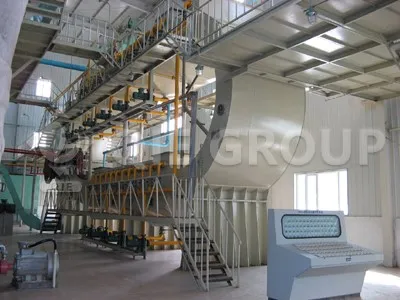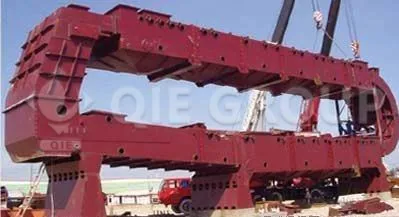
The material first enters the storage box at the top of the extractor, and slowly moves to the spray leaching section (straight section) under the push of the scraper chain frame. After multiple sprayings, it enters the lower layer through the curved section for further leaching. In the final stage of leaching, it is sprayed with fresh solvent, and then the wet meal continues to move forward through the draining section and drains naturally, and finally discharged from the discharge port (lower layer). The biggest feature of the annular extractor is that the material can be turned over when it enters the lower layer from the curved section, making the leaching of the material more uniform and thorough, the material layer is shallow, the wet meal contains less solvent, and the residual oil is easily reduced to less than 1% .

The power of the annular extractor is output to the driving shaft through the cycloid reducer-hard tooth surface reducer - chain transmission. The driving shaft rotates and drives the heavy-load conveying chain and chain frame to perform circular motion through the driving sprocket. Some annular extractors are equipped with a tensioning device above the driving shaft, while others are equipped with a tensioning device directly on the driving shaft. The material in the annular extractor is completely turned over in the bending section, and the solvent can soak the material in the bending section. Due to the structure of the bending section, the material layer height is generally 700 ~ 900 miu , which belongs to shallow material layer leaching. Its advantages are that it is conducive to the penetration and drainage of the solvent and mixed oil into the material layer, the leaching time is short, the wet cypress contains less solvent and the residual oil is low;






